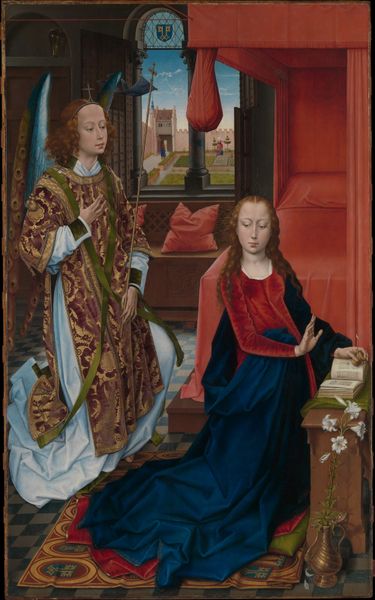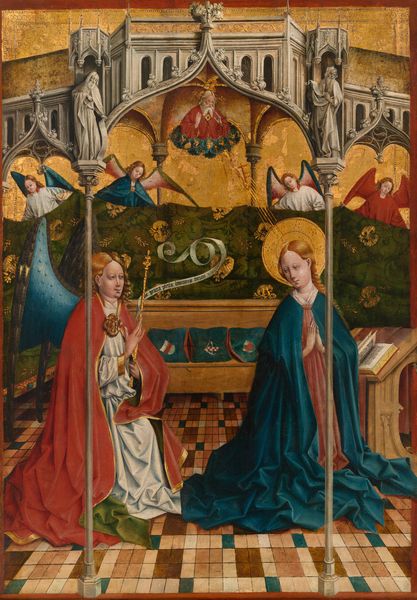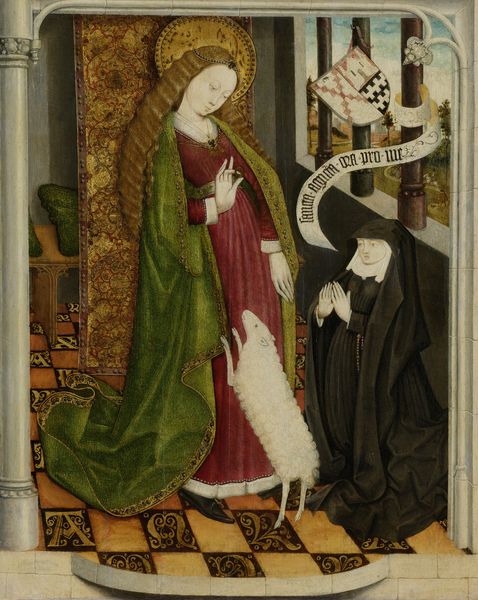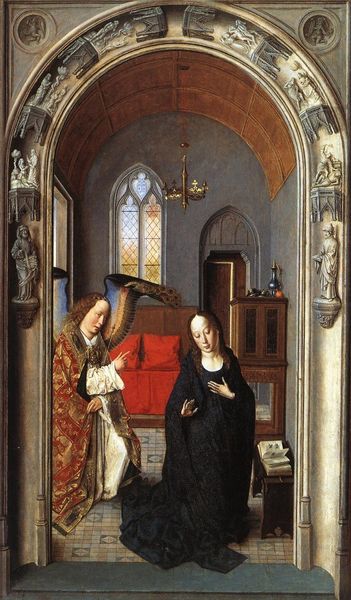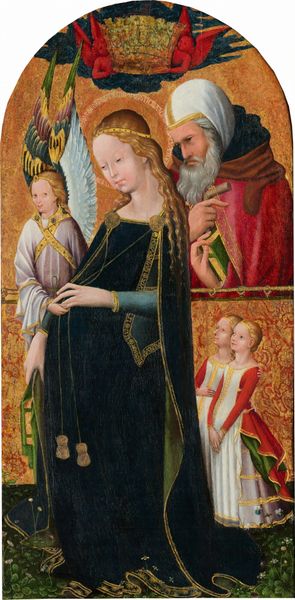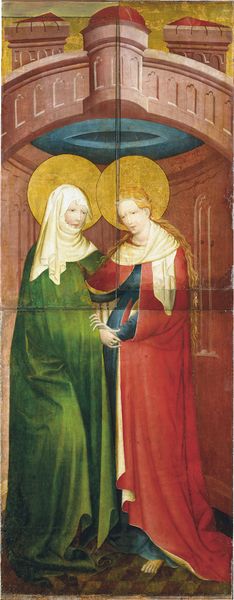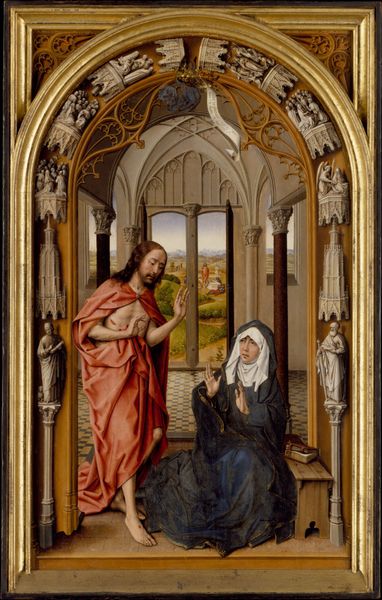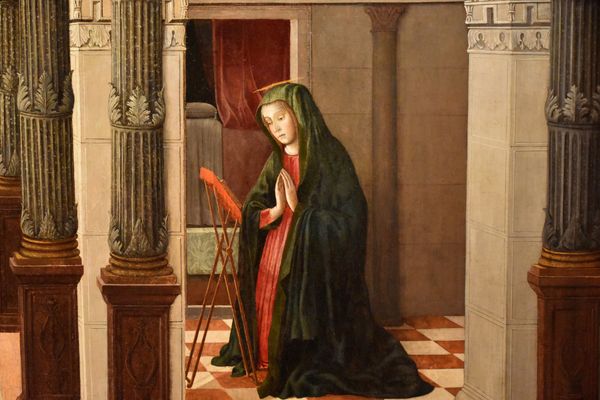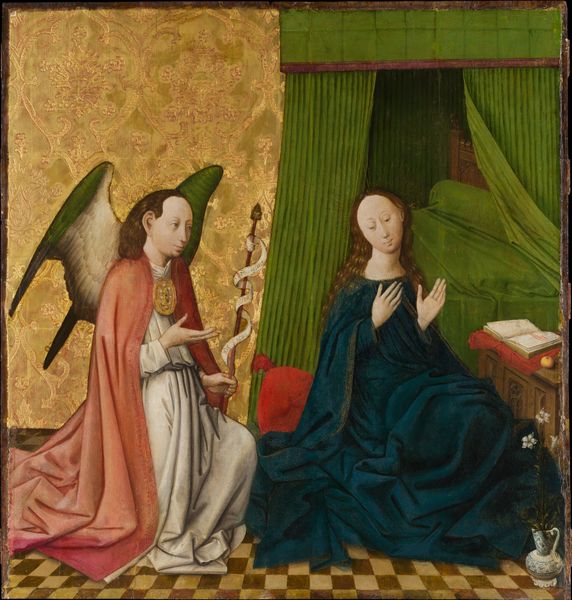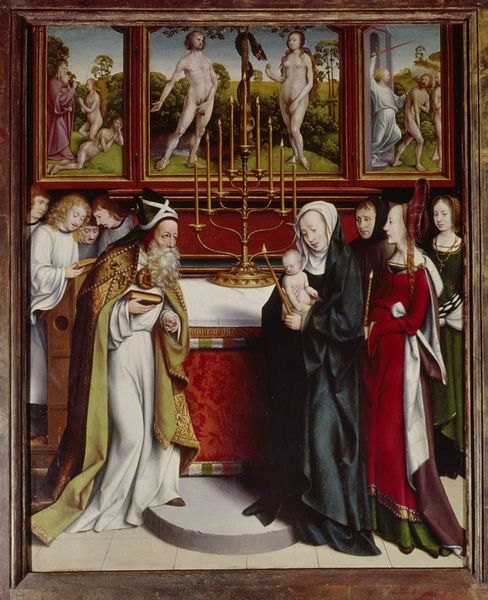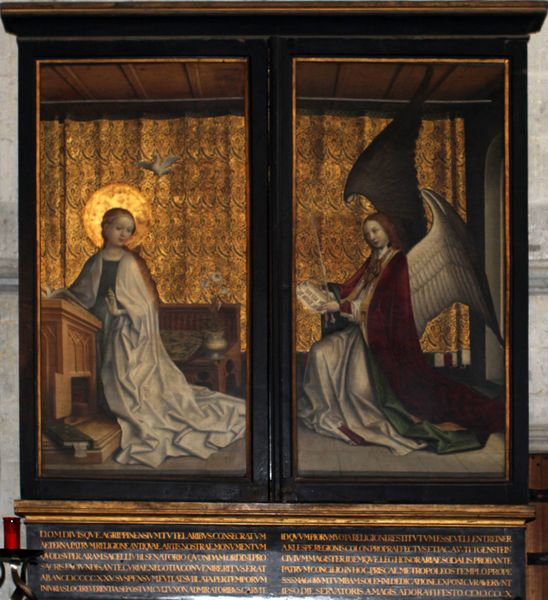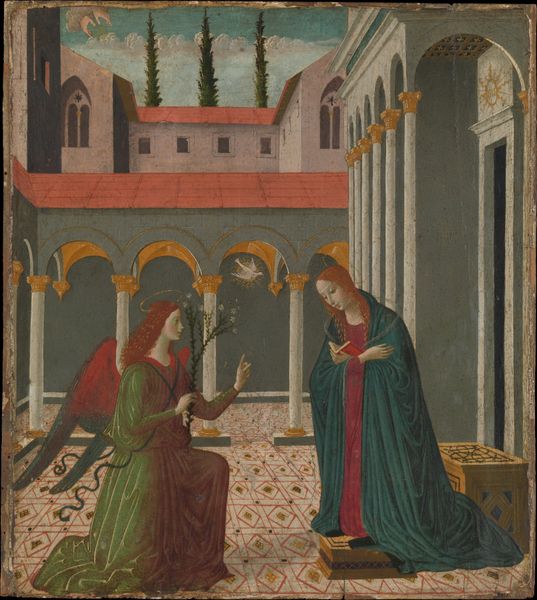
tempera, painting
#
narrative-art
#
tempera
#
painting
#
figuration
#
history-painting
#
italian-renaissance
Dimensions: 32 x 20 1/4 in. (81.3 x 51.4 cm)
Copyright: Public Domain
Curator: Welcome. We are standing before "The Annunciation," a tempera on panel painting by the artist known as the Budapest Master, created sometime between 1495 and 1505. It resides here at the Metropolitan Museum of Art. Editor: Immediately striking is the stillness—it’s not the dynamism of later Renaissance annunciations, but feels quiet and almost withdrawn. There’s an introspective quality about both figures that diverges from conventional interpretations. Curator: The Italian Renaissance certainly evolved, didn't it? This piece offers an early window, and the architectural backdrop is so interesting. Notice how the indoor and outdoor spaces blur? It creates a world that's both familiar and somehow otherworldly, reflective of the divine message being conveyed. Editor: It's that melding of spaces, inside and out, divine and earthly that intrigues me most. How do we interpret Mary’s near ambivalence? Is it meekness or something deeper, a quiet acknowledgement of an impossible, society-shattering proposal that she nevertheless accepts. Her social positioning here is a really fascinating paradox. Curator: Absolutely. The inscription on the scroll unfurled by the angel, part of Gabriel's greeting, highlights her importance as a vessel of the divine. The artist uses familiar tropes to convey religious dogma and solidify Mary’s iconic, if predetermined, image for believers. Editor: Yet, don't you feel that through subtle subversions – the muted palette, Mary’s unadorned face and acceptance – this Budapest Master’s image destabilizes what’s often interpreted as an unambiguous power dynamic. Perhaps inviting viewers, especially female viewers, to envision strength not in resistance, but in the thoughtful reception of life-altering opportunities. Curator: I see your point. I also appreciate how the piece exemplifies its era, offering clues to patronage and social expectations of religious art during that time. Editor: A constant dance, really, between the weight of socio-political forces and a potential sliver of subversive self-expression on the part of the artist. It's these intricacies, the potential for re-reading accepted historical truths, that draws me to art. Curator: Indeed. "The Annunciation," as realized here, continues to provide layers for discourse, even centuries after its creation. Editor: A visual echo resonating still with whispered possibilities.
Comments
No comments
Be the first to comment and join the conversation on the ultimate creative platform.
